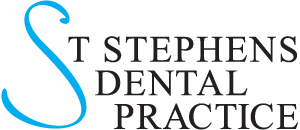How often should I brush my teeth?
Plaque forming on teeth and gums is the major cause of tooth decay and gum disease. So the best way to keep these problems at bay is to remove the plaque on your teeth regularly and effectively. It is essential that you brush your teeth twice a day for at least 2 minutes each time. Cleaning between your teeth at least once a day is also an essential.
What is the best toothpaste?
Toothpaste contains Fluoride, an ingredient that strengthens your teeth against decay. All adults should use toothpaste that contains at least 1350ppm Fluoride. After brushing you should spit out the excess toothpaste but don’t rinse out your mouth, the remaining toothpaste continues to work after you’ve finished brushing. Some toothpastes also contain antibacterial agents and these are good to help gum health.
What sort of tooth brush should I use?
The best kind of toothbrush to use is an electric type. This is because they can remove more plaque than a manual brush, doing it more gently and effectively. The technique is it hold the brush against each tooth surface for a few seconds and then move onto the next tooth (don’t scrub). At the practice we sell a range of electric tooth brushes including rotary and ultrasonic varieties.
The best manual toothbrush to use is one with a small head and an assortment of bristles with different lengths. The technique for a manual brush is different; place the brush head at the gum margin (where the pink gum and the white tooth meet) at a 45 degree angle, make small circular movements moving from tooth to tooth. You can scrub the tops of the teeth with a forward-backwards movement. You can also gently brush all of the soft tissues including gums and tongue as plaque forms all over the mouth.
In all comparison tests between electric and manual toothbrushes, electric brushes always come out best so we at St Stephens Dental Practice recommend them over manual varieties.
What else should I be doing?
The area in between teeth is most prone to gum disease and this is an area when your normal toothbrush just can’t get to. There are several methods of cleaning this area:
- Interdental brushes – The best way to clean this area. These come in different sizes and are small enough to get into the gaps between teeth. The technique is simple just push them in and out of the gaps between the teeth.
- Floss – The easiest way to use floss is to cut a piece (about 30cm) and wrap it around your middle fingers. You can then use your index fingers and thumbs to control it. You should pass the floss between two teeth and then pull it up and down the opposing tooth surfaces several times. This can be quite tricky to do at first but becomes easy with practice. If you need advice on this please ask your dentist.
- Flossettes – small lengths of floss held in an easy to use plastic holder.
It may be useful for you to bring your toothbrush, toothpaste, interdental brushes and/or floss with you to an appointment for your dentist to check.
If you have any questions about anything in this article please do not hesitate to ask your dentist who will be able to answer all you questions.
Call us on 01227 452668 or via Email on ststdental@gmail.com

